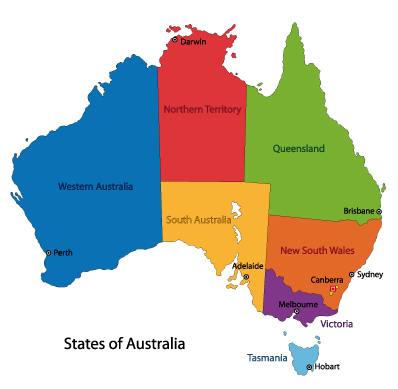|
At 9am on the 30th January, 2019, the Australian Government Federal Health Minister Greg Hunt announced the initiation of the ‘Australian Parkinson’s Mission‘ – a very massive $30 million clinical trial programme that will be focused on potentially disease modifying treatments for Parkinson’s. This huge endeavour will being with a large multi-arm study – involving 300 hundred participants and investigating 4 drugs (compared to a single placebo). It will be a first of its kind project in the world targeting Parkinson’s. This is a very exciting development for the Parkinson’s community! In today’s post, we will discuss what we currently know about the Australian Parkinson’s Mission project, what we hope to see resulting from the initiative, and why this is a tremendous step forward for the international Parkinson’s community as a whole.
|
 Source: Atom
Source: Atom
Being a patriotic kiwi there is always enormous potential to make fun when writing a post about any Parkinson’s-related news coming out of Australia. New Zealand and Australia have always had a big brother/little brother kind of relationship (and just so we are clear: NZ is the big brother!).
But today is different.
It is very strange to say, but… today… I am actually very proud of you Australia.
At 9am this morning at the Garvan Institute of Medical Research in Sydney, Greg Hunt – the Federal Health Minister of the Australian Government – announced the commencement of a major clinical trial initiative (named ‘The Australian Parkinson’s Mission‘), which is going to be a very large, world-leading clinical programme focused on potentially disease modifying drugs for Parkinson’s (Click here to read the press release).
Struth mate!!! This sounds fantastic. What do we know about the study?
Here is a video of Prof Simon Lewis (who is the neurologist leading the project) explaining what the Australian Parkinson’s Mission is all about:
Prof Lewis is a consultant neurologist at the Royal Prince Alfred Hospital and Professor of Cognitive Neuroscience at the University of Sydney. His personal website has many other videos – discussing all aspects of Parkinson’s – which readers may be interested in – click here to see more.
As Prof Lewis explains, the Australian Parkinson’s mission will be conducted over 5 years and will involve 1000 participants. It will look at many different aspects of Parkinson’s, from genetics to biomarkers.
It will begin with the recruitment of 300 individuals for a large multi-arm clinical trial.
What does that mean? Muli-arm?
It means that the participants will be randomly divided into 5 groups. Four of those groups will be given experimental treatments, while the fifth group will be given a placebo. By comparing multiple treatments to a single control group, this study will be cutting the cost of clinical testing (usually a single treatment group is compared to a control group). In addition, the researchers will be able to compare the benefits of the treatments against each other.
 Source: Eupati
Source: Eupati
The drugs being tested were selected by the Linked Clinical Trials committee – an international panel of Parkinson’s experts cooridnated by the Cure Parkinson’s Trust (Click here to read more about this). Here is a video of Dr Richard Wyse (driector of research at the Cure Parkinson’s Trust) explaining this process:
As Dr Wyse explains in the video, an important aspect of the Australian Parkinson’s Mission clinical trial is that the 4 drugs being tested are repurposed drugs.
What does ‘repurposed’ mean?
It means that the drugs are already approved by health regulators for medical use for other health conditions.
Given that these drugs have displayed beneficial properties in preclinical models of Parkinson’s, the researchers are now proposing to ‘repurpose’ these drugs for Parkinson’s. This approach will hopefully accelerate the translation of successful outcomes to patients as the health regulators already have a great deal of information about their safety in humans. This will ideally limit the number of clinical trials required, and dramatically speed up the delivery of new therapies for Parkinson’s.
 Source: Austin
Source: Austin
This video from Dr Rachel Dolhun of the Michael J Fox Foundation helps explain the concept of repurposing of drugs:
Which drugs are being tested?
The researchers have not yet announced these detail, but the Australian media have suggested that they could include “drugs for diabetes, asthma, cardiovascular disease, & a supplement” (Source).
When does it start?
Recruitment for the study will begin in the second quarter of 2019 in Queensland, New South Wales, and Victoria, and then it will be rolled out to other states in Australia in the fourth quarter of 2019.
 Source: Todayifoundout
Source: Todayifoundout
And what are the potential outcomes of the project?
Beyond the testing of potentially disease modifying treatments, the benefits of this study will be many.
For the participants recruited to the study, they will be getting involved in a study that will thoroughly evaluate their Parkinson’s. This will include:
- Having their DNA analysed.
- Having blood-based biomarkers evaluated.
- Monitoring of the disease’s progression and determine which therapies will be effective for each and every participant.
Watch this video of a presentation by Associate Prof Antony Cooper (of the Garvan Institute in Sydney) to learn more about the kind of genetics and biomarker analysis that will be incorporated in the Australian Parkinson’s Mission:
For the wider Parkinson’s community, this will hopefully result in:
- Having drugs that are effective in at least some patients and having the means to identify which individuals will benefit from those drugs and who will not.
- Accelerated evaluation of novel therapies via a large multi-arm trial as opposed to many individual trials.
- More personalised diagnosis and treatment for current and future patients using genomic information.
And all of this effort will hopefully result in more broader outcomes, including:
- A further understanding of the genetics influencing the condition, which should help to produce transformative advances in our understandings of Parkinson’s for next generation drug discovery.
- The establishment of an integrated genomic/clinical/biochemical national database of Parkinson’s in Australia which will enable further research into the genetic and biochemical basis of Parkinson’s for the wider international community, ultimately leading to predictive personalised treatment of the disease.
- The intrastructure for future clinical trials to be conducted in Australia, increasing the expertise and capacity of Australian clinical trials in Parkinson’s (and other neurological conditions).
- A demonstration and validation of a new advanced multi-arm trial design that should reduce trial costs and accelerate drug development and participant recruitment.
And ultimately this will have beneficial outcomes for the Health system and economy of Australia, such as:
- The potential to increase Pharma and biotech engagement in Australia.
- Drug development in Australia for a next generation of transforming targeted and personalised drugs for Parkinson’s patients
- Increased productivity for carers and patients of workforce age (18% of patients are of working age)
- Potential for significant savings to the health system as measured in a multi-billion dollar impact
Importantly, this new Australian Parkinson’s Mission will also act as a template for other countries to follow as we face up to the future prospects of neurodegenerative conditions (like Parkinson’s) in a world of aging demographics.
And while initated and led by Australian researchers, the Australian Parkinson’s Mission (APM) is exemplary as it is a truly international collaboration, involving support from:
- The Garvan Institute of Medical Research (Australia),
- Shake it Up Australia Foundation (Australian patient advocacy group)
- The Cure Parkinson’s Trust (UK)
- The Michael J Fox Foundation (USA)
- Parkinson’s Australia (Australian patient advocacy group)
In addition, senior neurologists and clinicians from in Queensland, New South Wales, Victoria, South Australia and West Australia will be involved, and international Parkinson’s experts will be advising as the project progresses.
Very interesting. Where can I learn more about this project?
By visiting the Australian Parkinson’s Mission website – Click here. At the site, you can learn more about the project, have questions answered, and sign up for more information.
So what does it all mean?
This is a very exciting development of the wider international Parkinson’s community. The Australian Government should be applauded for taking such a bold step forward to confront a growing (the incidence of Parkinson’s is growing at a faster rate than aging alone – click here to read more about this).
In addition to following the progress of the clinical trial, it will also be interesting to learn more details about possible substudies attached to the trial. It is important for all clinical trials going forward to have ‘added value’ components. These are research efforts that will contribute new information or systems of assessment/monitoring for Parkinson’s. In this manner, even if the treatment itself does not meet its primary endpoint, benefits will still be taken away from the overall study. And those added value components can help shape future trial design as their results/techniques get added in.
Very positive stuff – very proud of you Australia! You legend! And full credit to folks behind the scenes, like Clyde Campbell of Shake it up Australia for pushing to get this initiative off the ground.
I’m absolutely positive that there will be more SoPD posts on this topic.
And really, the only thing that remains to be said now is: Come on Jacinda! (Jacinda Ardern – PM of New Zealand) Do you really want to be outdone by Australia on a matter as important as this?!?
EDITOR’S NOTE – The author of this post is an employee of the Cure Parkinson’s Trust which is supporting the Australian Parkinson’s Mission. Neither the APM nor CPT has not asked for this post to be written. This post has been written by the author solely for the purpose of sharing what the author considers VERY interesting information.
The banner for today’s post was sourced from Wikipedia



Hi Simon,
From the SMH article you linked to:
“The mission’s first clinical trial will assign 300 patients to randomly receive existing drugs for diabetes, asthma, cardiovascular disease, a supplement or placebo”.
This sounds very definite. I’m not sure why you interpreted it as:
“the Australian media have suggested that they could include ‘drugs for diabetes, asthma, cardiovascular disease, & a supplement'”.
It will be interesting to learn what the supplement is. Nanoparticle curcumin maybe?
Jeff
LikeLike
Hi Jefferyn,
Thanks for your comment. Some of these details are still being worked out and there may still be some shuffling around of the final treatments to be tested. That is all I know for now. We should have more information soon though as the trial formally kicks off recruitment.
Kind regards,
Simon
LikeLike
Hi Simon,
Thank you for publishing this. As an Australian, I was moved – with goosebumps of awe – by this news, and the collaboration and hard work that must have preceded the announcement. I was interested to read that Geoff Dixon (ex-CEO of Qantas) and Dawn Dixon were two of the early supporters of the Australian Parkinson’s Mission. Geoff Dixon is an established philanthropist in Australia, but I only just noticed from a 2006 smh article that his wife Dawn has Parkinson’s.
Regards,
Paula
LikeLike
Hi Paula,
Thanks for your comment. I was thinking of giving Mr Dixon and a couple of others a nod of appreciation in the post (as I know that he has been very instrumental in getting this project off the ground), but I wasn’t sure how he might feel about that and it would start growing into a long list of individuals to nod to so I decided to play safe. He and the rest of the organisers should be fantastically proud that the APM is up and running, and we will hopefully reap some rewards for all their efforts. Proud of you Australia!
Kind regards,
Simon
LikeLike